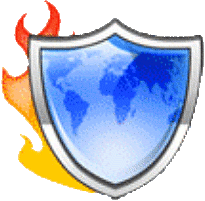
 |
All About Firewalls |
|
|
DMZShort for demilitarized zone, a computer or small subnetwork that sits between a trusted internal network, such as a corporate private LAN, and an untrusted external network, such as the public Internet. Typically, the DMZ contains devices accessible to Internet traffic, such as Web (HTTP ) servers, FTP servers, SMTP (e-mail) servers and DNS servers.  In a DMZ configuration, most computers on the LAN run behind a firewall connected to a public network like the Internet. One or more computers also run outside the firewall, in the DMZ. Those computers on the outside intercept traffic and broker requests for the rest of the LAN, adding an extra layer of protection for computers behind the firewall. Traditional DMZs allow computers behind the firewall to initiate requests outbound to the DMZ. Computers in the DMZ in turn respond, forward or re-issue requests out to the Internet or other public network, as proxy servers do. (Many DMZ implementations, in fact, simply utilize a proxy server or servers as the computers within the DMZ.) The LAN firewall, though, prevents computers in the DMZ from initiating inbound requests. DMZ is a commonly-touted feature of home broadband routers. However, in most instances these features are not true DMZs. Broadband routers often implement a DMZ simply through additional firewall rules, meaning that incoming requests reach the firewall directly. In a true DMZ, incoming requests must first pass through a DMZ computer before reaching the firewall. |